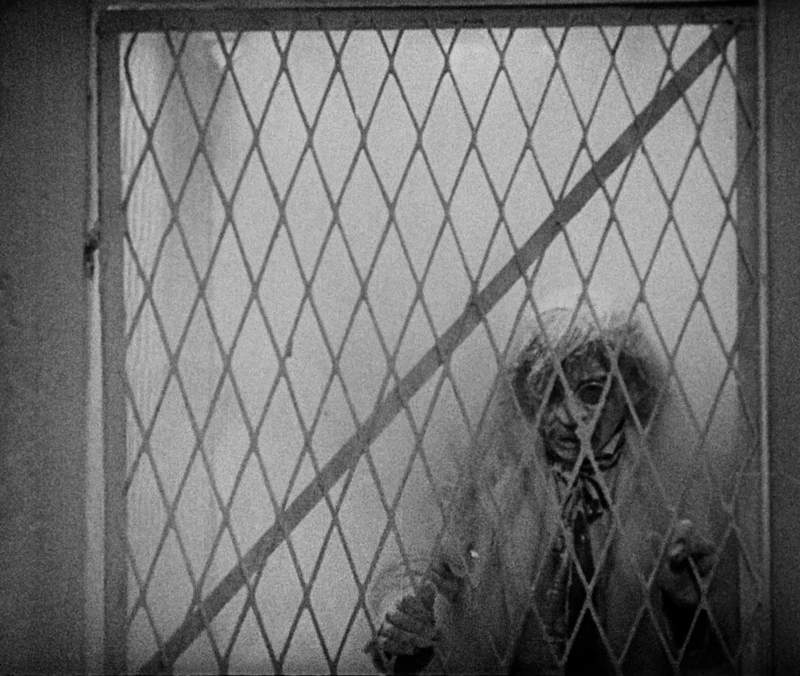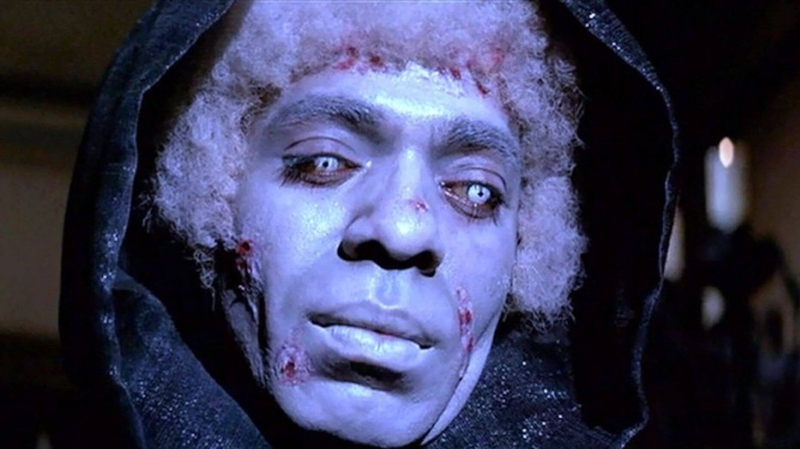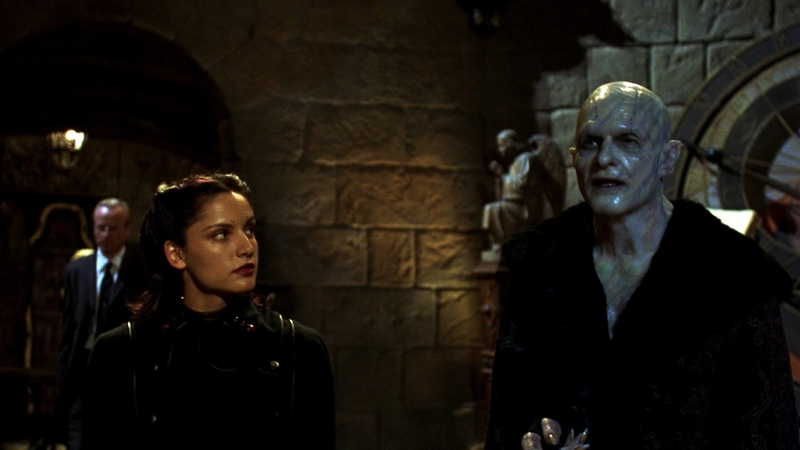"The vampire is a hungry spirit that will drain the living … essentially a father and mother of shadows." ― Guillermo del Toro [1]
Gods or monsters, vampires are the proto-superhero; "mutants" and their superhuman abilities (primarily) branded with a capital "M" for Marvel. Black superheroes, in particular, have (by default) always been the outsiders; their "otherness" deeply rooted in racism and persecution. Forget the proverbial flip of the finger, powerful messages hit much harder when attached to a stake through the heart of white America. Still, for some, it is easy to forget that Blade was not only part of '70s Blaxploitation but also (twenty-five years later) single-handedly gave birth to the modern iteration of mega-successful Marvel movies. Now dominated by capes and tights, the cinematic landscape has never been the same.
Always bet on black
In leathers' n' shades, this "Daywalker" was a cool "motherfucker” from the offset, bursting from the pages of Tomb of Dracula issue #10 (July 1973) as a gun-toting and sword-wielding vampire-slayer. As a response to volatile times and Marvel's drive for character diversity, it seemed only natural that Blade would be born out of cultural divide; the cover of Tomb (literally) threatening a "superior white" villain with a wooden knife. Dracula was born out of anti-Semitism ― a paranoid vision of invading Jews ― and, although Blade had no black creative team at the time, writer Marv Wolfman and artist Gene Colan's [2] Jewish heritage at least had good intentions in representing a minority.
As with Blade, the characters Black Panther, and Luke Cage were similarly "whitely" written as jive talkin' stereotypes. Tapping into popular culture seemed the quick and easy route, with Blaxploitation movies the go-to. However, although it had a place in history, the movement was often criticized. Although pre-eminent American photojournalist Gordon Parks was the first African American to produce and direct major motion pictures — going onto direct the iconic Shaft (1971) — only some of the films that followed were written and directed by black filmmakers. Often written and directed by white collaborators, Jack Hill's (iconic) Pam Grier vehicles Coffy (1973) and Foxy Brown (1974) were a few examples… guilty as charged.
Blacula (1972) — this year, celebrating half a century [3] —presents a defining moment in the history of black horror with William H. Marshall's Mamuwalde, the first black vampire on film and a natural precursor to Blade's debut a year later. Within the past couple of decades, "other" interpretations from around the world include Tomas Alfredson's 2008 adaptation of John Ajvide Lindqvist's novel, Let the Right One In (2004), Park Chan-wook's Thirst (Korea, 2009), and Ana Lily Amirpour's Iranian vampire in A Girl Walks Home Alone at Night (2014). Shot in the US, Girl underscores Amirpour's interstitial identity as an English-born American of Iranian heritage, showing how far marginalized groups and multicultural heritages have come when being depicted within horror.

No more bats
According to Guillermo del Toro, Blade II (2002) was, to some extent, taken on so he could pave his way towards working on Mike Mignola's Hellboy. Adolescent by design, the sequel is a fun "six-pack-and-a-pizza kind of movie … a musical of violence" [4]. With David S. Goyer [5] returning to script duties, as comic book aficionados, both the writer and director relished the source material. Pouring over manga during preproduction, del Toro's heady mix of gore and action sequences plays as something closer to a live-action anime, of which Stephen Norrington's original Blade and the Wachowskis' first Matrix (1999) championed in the first place.
Not only is our anti-hero armed with a myriad of weapons but also, as a half-vampire himself, takes full advantage of "all of their strengths" and "none of their weaknesses." Sporting the trademark sunglasses and leathered up for the '90s, Blade's carnage was the perfect antidote to the high camp of Joel Schumacher's Batman & Robin (1997) as he takes out as many bloodsuckers as possible. Blade II showcased the magic sequel formula of pushing the world and its creatures further. Evolving the vampire and its myth into something fresh, del Toro built on the energy of the first film while putting his own stamp on the franchise; reminding us how terrifying vampires can be, caked in blood and all kinds of icky shit.

After rescuing his mentor, Whistler (Kris Kristofferson) — now resurrected and turned himself — Blade (Wesley Snipes) is confronted by an elite team of vampires called the Bloodpack who warn them of a new viral breed called "Reapers" who feed on humans and vampires alike. The "Reaper strain" has caused a vampire pandemic as the carrier, Nomak (Luke Goss), spreads the infection, his horde multiplying. These are a far cry from the traditional bloodsuckers; sharp teeth and biting wit replaced with unfolding mandibles and barbed tongues… and that's just a "taster" of their mutation and insatiable thirst. In a twist (spoiler alert) — dangerously close to modern-day COVID conspiracies — it is revealed that the Reaper strain didn't evolve at all but was designed by the pureblood, Eli Damaskinos (Thomas Kretschmann). Now, del Toro's very own Frankenstein's monster — the outcast; the failed experiment; the son — returns home to seek revenge against his father.
When it comes to monster makers, there are few who rival del Toro. Ghosts, gun-toting demons, sinister fawns, and Lovecraftian machinations have all been given his unique stamp. Take his approach to the vampire. He isn't interested in what has already been done; instead, delving into something more archaic. In his 1993 debut, Cronos (funded by his dad's credit card), a bloodlust is set in motion by an ancient artifact when an antique dealer Jesus Gris (Federico Luppi) stumbles upon a 400-year-old golden scarab. When he winds the object, it unfurls its legs, grabbing hold and injecting him with a solution created by an entombed insect that has remained dormant within. Who needs bats? All the same, Gris, granted youth and eternal life, has now developed a thirst for blood.

Where del Toro often escalates his scenes by moving the camera through unfamiliar spaces and (slowly) revealing those terrifying monsters; in Blade II his vampires come thick and fast. But, as with the scarab twist in Cronos, these are no ordinary vampires. Casting aside the mechanical, here he manages to present a more brutal biological twist on their physiology. Of course, the sequel's energy is dialed up to eleven, but in exploring the director's influences, his appetite for the arts and literature makes for an interesting observation of how his vampires have evolved.
Pop culture is only part of what makes del Toro tick, "That is just one facet of what I do, what I draw upon, and who I am. I am influenced by literature as much as I am by comics, and by fine art as much as I am by so-called low-brow." [6] There is a transition and freedom in "doing [his] own thing", meticulously planned with a deep love and appreciation for everything he absorbs and reconnects with. Del Toro's "man cave", Bleak House — his "lodging" of collections (since 2007) — showcases how passionate and studious he is. Curated himself, life-size versions of Poe and Lovecraft guard original 17th and 18th-century tomes of the occult, a (blood) rich tapestry of ghosts and vampirism.

There's a majestic and intricate nature to his worlds and the creatures inhabiting them; gestating in his scripts and notebooks before being brought to life by his talented crew. An unlimited imagination inspired by celluloid and "many a quaint and curious volume of forgotten lore…" [7], as one of his favorite films, Carl Theodor Dreyer's Vampyr (shot in 1930, released in 1932) has remained a huge influence on del Toro's career as a filmmaker. As part of "The Masters of Cinema Series", in his insightful commentary from 2008 for Eureka Entertainment's rerelease of Vampyr, he states, "I remember projecting this horribly ratty chewed up 16mm copy of the film and that print, no matter how damaged it was, no matter how grungy, dingy it was; the images seemed to burn through it and at that age when I saw it, many of the images in this film became seminal in what I do."
He specifically goes on to highlight the turning of gears during the climax of the film that has become a particular device that permeates his work. "I shared the same fascination [as Dreyer's] for this sort of destiny, these pensating machines. The fact the death of the doctor is mechanical — that it is inexorable and total, and obliterates him into white — is absolutely one of the greatest moments." [8] This is highlighted further by Marc Scott Zicree in his "Introduction" to Guillermo del Toro Cabinet of Curiosities: My Notebooks, Collections, and Other Obsessions (2013), in which "notions of clockwork mechanisms [9] and tentacle nightmares migrate from one project to the next."

Continuing with the commentary he delves further into Dreyer's use of symbolism — his (accidental) bone-white over-exposure that turned a film into a dreamscape painting — all a constant reminder of the "memento mori". Latin for "remember that you will die"; as a reminder of our mortality, this medieval philosophy gave birth to the gothic and gothic revival during the Victorian era, becoming an artistic and symbolic trope. Wrapped in a menacing use of light and shadow, these motifs are scattered throughout Vampyr; the skull, carvings of a rotting corpse, the dance of death, shadows out of sync, the hourglass, a pendulum, and a clock without a face or mechanism. "Time eternal [or] how time eats at all," he states before elaborating further, "Time is the biggest vampire that you are bound to encounter because it will end up devouring you and devouring everything around you."

Original strains
Between the corny one-liners and gloriously gruesome slice 'n' dice moments, Blade's world is a dive of cold turkey vamps hooked on blood-soaked cocaine. That is, before del Toro properly sinks his teeth into things, approaching a vampire variant through a strain, creating a far more infectious creature. His study of these monsters is based on a place of origin, building on what differentiates the myths from the traditional European mold. This is key in defining his approach and sets his vampires apart from most; his fascination with the strigoi of ancient Europe — armed with stingers under their tongue — a key inspiration. Extravagancies of his dark designs were explored further in his trilogy of novels with Chuck Hogan, The Strain (2009-2011) — adapted into a subsequent TV series (2014-2017) — that explored not only (familiar) Reaper anatomy but also a pandemic plot. "Originally I wanted very much to try and present the origins of the vampire plague in very modern terms. And then little by little, with each book, go back to finding the spiritual in the biology and finding the biology in the myth." [10]
This modern approach can certainly be linked to another of del Toro's favorite works. Often considered the first modern vampire novel, spatters of I Am Legend ― another firm favorite of del Toro's ― can also be traced within the film. In fact, he was briefly linked to the ill-fated Schwarzenegger version. "The vampires for Blade II came from me figuring out vampirism for Cronos, and also for a pitch that was unsuccessful for I Am Legend." Already filmed as The Last Man on Earth (1964) ― starring Vincent Price ― and The Omega Man (1971) ― with Charlton Heston returning to apocalyptic mode ― lone survivor, Robert Neville, was eventually cast as another black vampire-slayer, played by Will Smith in 2007.

As well as a virus and pandemic, Richard Matheson's (novel) ideas explored something more evolutionary, a key driving force for del Toro's spin on the lore. In Blade II, the Reapers are not merely survivors of a virus; instead, its mutation has created a new parasitic organism — "cancer, with purpose" — destroying humanity and the Vampire Nation from within. Infected by the carrier, Nomak, his victims furiously spread the virus as their higher metabolism forces them to constantly feed on blood. Their evolution is, of course, a physical one armed with neurotoxins to paralyze their victims, a reinforced chest ― their hearts encased in bone ― and, when a Reaper's organs are "hardwired" with a drop of blood, the body reacts without the brain intact. This is just one of many grotesque and bizarre autopsies that color the sequel, brought so dramatically to life by the legendary special makeup effects artist Steve Johnson, who helps elevate the film in an age of overly saturated CGI.

His demonic glee
Del Toro is one of few directors who finds a happy balance between his work on smaller (foreign) affairs and commercial Hollywood outings. But, whereas his bigger-budgeted US films — Hellboy (2004) and Pacific Rim (2013) — pack a giant-sized punch, his homegrown releases — The Devil's Backbone (2001) and Pan's Labyrinth (2006) — take a glass bottle to the face by addressing history with a ghost story and dark fantasy. A true auteur (à la Dreyer), he can flick between the roaming spirit of his possessed camera one moment, the next, balls-to-the-wall action exploding with monstrous grotesques.
A true da Vinci of horror, his dark alchemy (hidden deep within those notebooks [11]) proves he is more than a filmmaker. His diverse interests and supreme talents are boundless; his close friend, James Cameron, sums him up perfectly: "The power of his vision comes from his ability to communicate directly with our darkest places." Most importantly, he can still have fun with that, Blade II never claiming to be anything more than an action horror. But you would be blind to not notice — considering del Toro is himself an outsider — the themes of white superiority; the contrast between the diverse Bloodpack [12] and the "white superior" pureblood with marbled complexion and (vile) Übermensch experiments.
Del Toro's comfort blanket is death; an unshakable shroud that wraps his lavish productions with a distinct sense of dread, no matter how outlandish the narratives become. His work is elevated because he believes in monsters. To him, they're as real as cherry pie. Believing the vampire is not just a physical entity (with a bite), but a malevolent spirit that refuses to be nailed to the ground has freed these creatures of the night; allowing them to possess other (varied) forms. Whether mechanical or biological, del Toro's inspired incarnations have reconfigured the lore and, in turn, led to a unique evolution of this classic monster.






